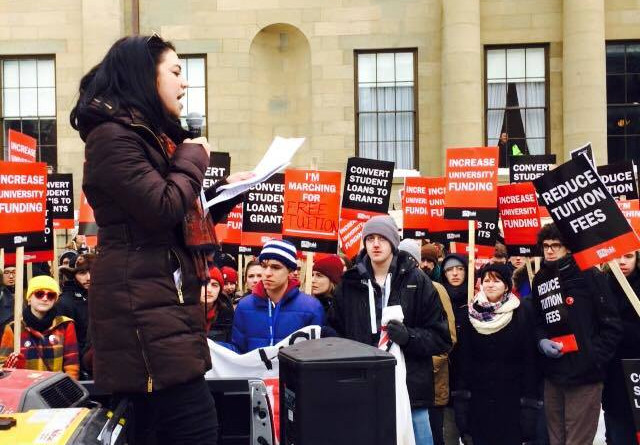Students footing hefty tuition bill as government funding for universities fall

By Christopher Pearson
A disturbing trend is beginning to form where university revenue coming from tuition is growing rapidly while government funding is falling, according the latest figures coming from from Statistics Canada.
The data show that between the years of 2009 to 2014, the revenue from federal funding decreased 12.6% overall, while the revenue from non-federal funding (excluding foreign) increased 2.5%. In comparison, the revenue from tuition increased an astounding 28.8%.
During this time period, funding from the federal government has dropped on average 3.15% per year. In 2009-2010, funding was $3.75 billion and dropped to $3.3 billion in 2013-2014. On average, this funding cut totalled out to a consistent decrease of $111 million per year.
While there has been a modest 0.6% increase per year in non-federal government funding (excluding foreign revenue) over the same time period, tuition revenue for universities has increased dramatically, 7.25% per year since 2009.
The government’s decrease in funding has come at a time when universities are gaining more revenue from students, with tuition revenue rising from $6.48 billion to $8.66 billion over this time period. In comparison, non-federal (excluding foreign) funding rose from $13.32 billion to $13.67 billion.
Non-federal government funding consists of provincial, municipal, other provinces, and foreign. Despite the meager increase in funding between the years 2009-2014, the mean non-federal funding amount (excluding foreign revenue) was $13.56 billion. For comparison, the mean federal funding amount was $3.56 billion.
The immediate future shows no promise for tuition revenue to decline with some estimates indicating that tuition could continue to rise. In September of 2014,CBC reported that “students will need deeper pockets to study at Canadian universities over the next four years with annual fees projected to rise 13 per cent”.
The report also included that “the funding gap is driving universities to download more costs on students by charging additional compulsory fees on top of tuition that are subject to few, if any, restrictions” (CBC). Statistics Canada shows that in 2009-2010, the makeup of “other fees” in the tuition amount for students was $778 million, and increased to $1.04 billion in 2013-2014. This was a 28.7% ovewrall increase.
Students are ill-equipped to deal with this increase, especially because there is a lack of employment in summer jobs. Statistics Canada reported that in 2014, the unemployment rate for returning students aged 20-24 was 15.1%.
The federal government has also failed to adequately address the issue of unpaid internships forcing students who want to improve their career outlook to work for free.
Student advocacy groups argue that these issues will only continue to plague the Canadian economy until they are resolved, and point out that it is time for the Canadian government to come to the realization that in order to build a better future, they must invest in it.
“Students are graduating with record-levels of debt and there are already over 200,000 graduates struggling to make payments each month,” Jessica McCormick, National Chairperson of the Canadian Federation of Students said. “Weighing Canadians down with enormous debts as they start their careers drags back economic growth.”



